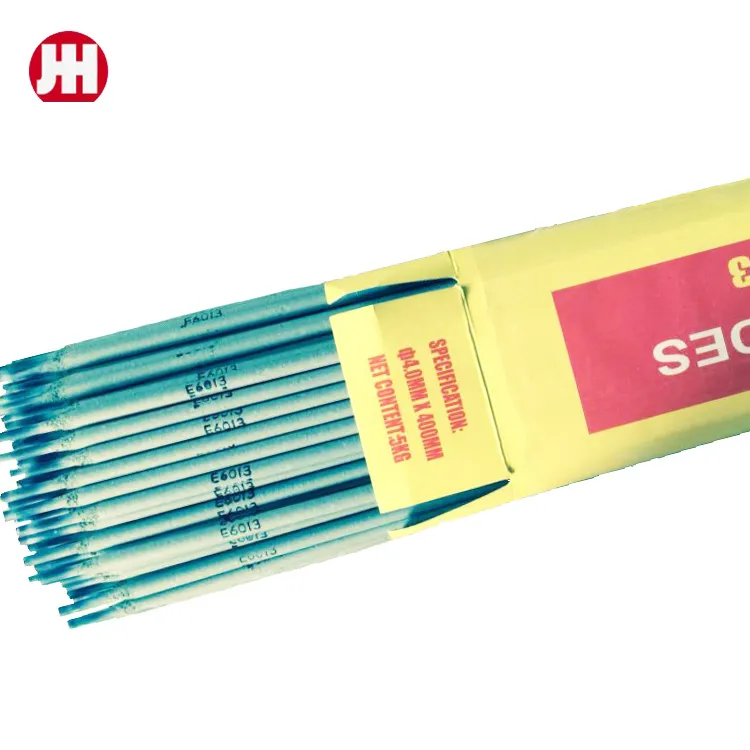Maximizing Performance: Insights into Welding Electrodes and Their Applications
In the world of welding, the quality and durability of welding electrodes play a pivotal role in ensuring strong and reliable joints. Whether you're sourcing from trusted welding electrodes suppliers or evaluating the price of welding electrodes for your next project, understanding their features, maintenance, and application can significantly enhance welding outcomes. This article delves into the factors influencing the service life of electrodes, the signs indicating replacement needs, and adjustments required for different environmental conditions to ensure top-notch results.

What Factors Affect the Service Life of Welding Electrodes?
The longevity of welding electrodes depends on several critical factors, including the material composition, storage conditions, and frequency of use. High-quality electrodes, such as the N6013 welding rod, are designed with a specific flux composition and metal core to withstand rigorous welding processes. However, improper storage or exposure to moisture can degrade their performance over time.
Environmental factors, such as humidity, can lead to the absorption of moisture by the flux coating. This results in poor arc stability and can increase the chances of porosity in the weld. Additionally, overheating the electrodes during welding can compromise their structural integrity, significantly shortening their lifespan.
To maximize the service life of your electrodes, proper storage in a dry and temperature-controlled environment is essential. Always inspect the electrodes for visible damage, such as cracks or flaking of the flux coating, before use.
How to Determine When Welding Electrodes Need to Be Replaced
Timely replacement of welding rods is crucial for maintaining weld quality and avoiding costly repairs. During the welding process, signs of electrode wear or degradation become evident through reduced arc stability, excessive spatter, or difficulty in maintaining a consistent weld pool.
For instance, the N6013 welding rod, known for its smooth arc and versatility, should maintain consistent performance throughout its use. If the electrode begins to produce irregular arcs or excessive slag that affects weld integrity, it’s time for replacement.
In industrial settings, regular inspections of electrodes during breaks in welding can help identify issues early. Check for physical wear, discoloration, or degradation in the flux coating. These are clear indicators that the electrode may no longer deliver optimal performance.
Adjustments to Consider When Using Welding Electrodes in Varying Conditions
Environmental factors such as temperature, humidity, and altitude can significantly impact the performance of welding electrodes. In high-humidity environments, electrodes are prone to absorbing moisture, which can lead to weld defects like porosity. To counter this, it’s advisable to preheat the electrodes in a rod oven before use to eliminate excess moisture.
Similarly, in low-temperature conditions, the weld pool may cool too quickly, leading to brittle welds. Adjusting welding parameters, such as increasing current or using a more suitable electrode like the N6013 welding rod, can help achieve better results.
Altitude also plays a role in arc stability due to changes in atmospheric pressure. When welding at higher altitudes, lowering the arc length and fine-tuning voltage settings can help maintain stable performance.
Exploring the Market Trends in Welding Electrodes
With advancements in welding technology and increased demand across industries, the market for welding electrodes is constantly evolving. Leading welding electrodes suppliers now offer a wide variety of specialized rods tailored to different applications, including structural welding, pipeline welding, and decorative work.
The price of welding electrodes varies based on the material composition, brand, and intended use. For instance, high-performance options like the N6013 welding rod are competitively priced while offering superior reliability and versatility. This makes them a preferred choice for both professionals and hobbyists seeking value for their investment.
Additionally, eco-friendly electrodes are gaining traction, emphasizing reduced emissions and enhanced efficiency. These trends highlight a shift towards sustainable solutions in welding technology, ensuring long-term benefits for both the industry and the environment.
Why N6013 Welding Rod Is a Game-Changer
The N6013 welding rod stands out for its exceptional arc stability, ease of use, and ability to produce clean, high-quality welds. Its versatility makes it suitable for all-position welding, catering to diverse projects ranging from automotive repairs to structural applications.
By addressing common challenges like slag removal and spatter control, this rod simplifies the welding process for both professionals and beginners. Coupled with competitive pricing from reputable welding electrodes suppliers, the N6013 welding rod offers a cost-effective solution without compromising on performance.
Investing in high-quality welding electrodes and understanding their proper usage ensures not only superior welds but also long-term efficiency and reliability. Whether you’re tackling a large-scale industrial project or a small repair job, choosing the right electrodes can make all the difference. Explore the unmatched performance of the N6013 welding rod and elevate your welding capabilities today!
-
What is a medium-frequency pulse? What types of welding are suitable for?AktualnościNov.24,2025
-
Why is the overall cost of CO2 welding lower than that of shielded metal arc welding?AktualnościNov.21,2025
-
Welding Knowledge 6AktualnościNov.20,2025
-
What is a low-frequency pulse? What types of welding are they suitable for?AktualnościNov.19,2025
-
Why are the weld joints from CO₂ gas shielded welding of such high quality?AktualnościNov.18,2025
-
J506 Welding Rod - Low Hydrogen, All-Position, AC/DC E7016AktualnościNov.17,2025


